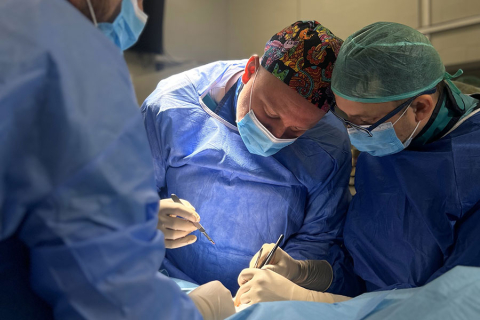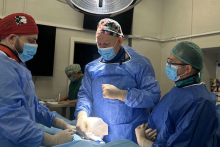- The procedure went well. The patient, 54 years old with multiple sclerosis, feels well, she has been struggling with bladder problems for four years. She used to sit in a wet pampers practically all the time, because she felt a push on her bladder nonstop. Now she can stand without urinating for three to four hours. This significantly improves her comfort - comments Prof. Radziszewski.
What the Sacral nerve neuromodulation procedure consists of
Sacral nerve neuromodulation involves implanting a stimulator that sends electrical impulses to the sacral nerves. This helps restore their proper activity, and thus the proper functioning of the lower urinary tract and pelvic floor.
Neuromodulation is mainly used for patients with an overactive bladder, i.e. one that causes frequent urination and incontinence. According to doctors' estimates, in Poland such patients account for up to 10% of the population. Patients who are not helped by other forms of therapy, such as drug or behavioral therapy, are first implanted with the device for testing. Doctors assess the degree of improvement. If it is significant, i.e. more than 50%, then the device is implanted permanently. The procedure itself is carried out under local anesthesia and takes about two hours.
New generation stimulators
The new generation pacemakers can serve patients for up to 15 years. They also allow all parameters to be personalized, which means the pacemaker responds to the patient's real problems. In addition, doctors have remote access to the device, so they can change its settings should the need arise. And, especially important for the first MS patient, implanting the pacemaker won't interfere with tests like an MRI. All of this will greatly improve her quality of life and that of subsequent patients for whom the procedure can be performed.

